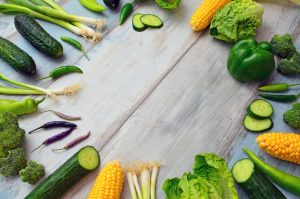In the ongoing debate about sustainable agriculture, organic and conventional farming emerge as two prominent approaches, each with its own set of philosophies, practices, and implications for the environment and public health. Organic farming emphasizes ecological balance, biodiversity, and the avoidance of synthetic chemicals, whereas conventional farming typically prioritizes higher yields and efficiency, often employing chemical fertilizers and pesticides. As consumers become increasingly aware of where their food comes from, understanding the differences between these two methods is crucial for making informed choices.
Both organic and conventional farming have their advocates and critics, and the choice between them can significantly impact the environment, food quality, and local economies. This article aims to explore the advantages and disadvantages of each approach, providing a comprehensive comparison that will aid in understanding their respective roles in modern agriculture. By examining key factors such as environmental impact, economic viability, health benefits, and food security, we can better appreciate the complexities of these farming practices.
One of the most significant differences between organic and conventional farming lies in their environmental impact. Organic farming practices are designed to promote biodiversity, enhance soil health, and reduce pollution. By utilizing crop rotation, composting, and natural pest control methods, organic farmers aim to create a sustainable ecosystem. In contrast, conventional farming often relies on monoculture and chemical inputs, which can lead to soil degradation, water contamination, and loss of biodiversity. While conventional methods may yield higher immediate outputs, the long-term environmental consequences can be detrimental, raising concerns about sustainability.
Economic viability is another critical factor in the comparison of organic and conventional farming. Organic farming typically has higher production costs due to the labor-intensive practices and certification processes involved. However, organic products often fetch a premium price in the market, which can offset these costs for farmers. On the other hand, conventional farming benefits from economies of scale and lower input costs, making it more accessible for many farmers, particularly in regions with limited resources. This economic disparity can influence farmers’ choices, as they weigh the potential for profit against the environmental and health implications of their farming methods.
When it comes to health benefits, organic farming has been touted for producing food free from synthetic pesticides and fertilizers, which some studies suggest may reduce the risk of certain health issues. Organic produce is often perceived as healthier and more nutritious, although research in this area is still ongoing. Conversely, conventional farming has faced scrutiny for the potential health risks associated with pesticide residues and antibiotic use in livestock. While regulatory bodies set limits on these substances, the debate continues as consumers seek transparency and safety in their food choices.
Food security is an essential aspect of the agricultural conversation, and both organic and conventional farming can play vital roles. Conventional agriculture has been instrumental in feeding a growing global population, thanks to its ability to produce large quantities of food quickly. However, concerns about food quality and environmental sustainability have led to a resurgence in interest in organic farming, which promotes local food systems and diversified crops. Striking a balance between these two approaches may be key to ensuring food security while addressing the environmental and health concerns associated with current agricultural practices.
In conclusion, the comparison between organic and conventional farming reveals a complex landscape of advantages and disadvantages. Organic farming offers a more sustainable approach that prioritizes environmental health and food quality, while conventional farming provides efficiency and higher yields that are crucial for feeding a growing population. Ultimately, the choice between these two methods is not merely a matter of personal preference but a reflection of broader societal values regarding sustainability, health, and economic viability.
As consumers, policymakers, and farmers continue to navigate the challenges of modern agriculture, it is essential to foster dialogue and collaboration between proponents of both organic and conventional practices. By understanding the strengths and weaknesses of each approach, we can work towards a more sustainable food system that benefits both people and the planet. The future of agriculture may not lie in choosing one method over the other but rather in integrating the best practices from both to create a resilient and responsible food production system.



